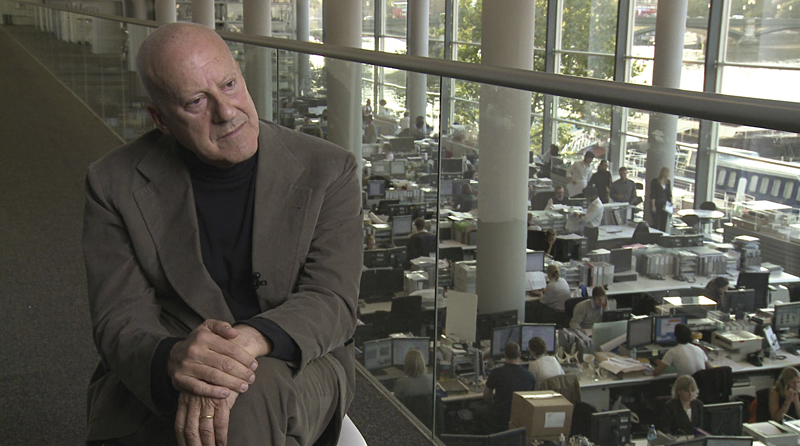In this country, British modernist “starchitect” Norman Foster is perhaps best known for the Hearst headquarters in New York, with its huge atrium set within the old masonry shell and a faceted new glass tower rising above. A working-class Manchester lad, he trained at Yale and became a brand name by the late ’60s—aided in part by association with his futurist mentor, Buckminster Fuller (who posed this doc’s titular question). Now in his mid-70s, Foster runs a large international firm that (as detractors will tell you, though none appear here) has been chasing megaproject money from China to Dubai to Kazakhstan. “They are thinking big,” he says of such emerging economies, and big is certainly what Foster does best. Aerial shots of the famous Millau Viaduct in France, with its needle-topped spires and delicate lattice of support cables, draw gasps; and there is much to praise in Hong Kong’s HSBC tower and other structures that place the skeleton on the outside. Inside are, yes, still more atria—the kind of soaring enclosures that suggest both cathedral and shopping mall. “How do you give glamour to an office building?” Foster asks rhetorically. Well, so far as the owners are concerned, you hire a starchitect, which makes the building easier to lease. But absent here among those who praise Foster (including Bono, Richard Serra, and critic Paul Goldberger), are the voices of any poor office workers who actually labor within. His edifices are not, to put it politely, human-scaled; their huge, exposed guts—steel sinew and Kevlar skin—can make you feel like Shia LaBeouf being dwarfed by Optimus Prime. By the time this fawning doc enters the CG-animated rendering of a $15 billion planned city in Abu Dhabi (a movie within the movie), you realize it’s essentially an infomercial for the company Foster unsuccessfully tried to sell before the 2008 crash. But even in our current recession, he’s still thinking big—most recently pitching a $77 billion transportation hub north of London. If the Brits don’t buy it, the Chinese will.
How Much Does Your Building Weigh, Mr. Foster?: The British Starchitect Follows the Money








